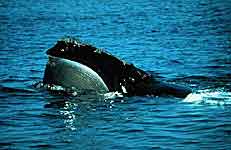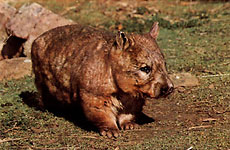


Scientists estimate that about 1000 nesting Kemp’s Ridley sea turtles, 300 right whales, and 65 northern hairy-nosed wombats survive in the wild, to name just a few of the world’s endangered species.1 But what do those numbers mean? Are 65 hairy-nosed wombats enough to save a species teetering on the edge of extinction? Ignoring evolutionary history, one might answer, “Sure; as long as they can breed, we only need a few individuals to start a new population.” But evolutionary theory tells a different story.
According to evolutionary theory, very small populations face two dangers — inbreeding depression and low genetic variation — that might keep them from recovering, despite our best efforts to preserve them.
